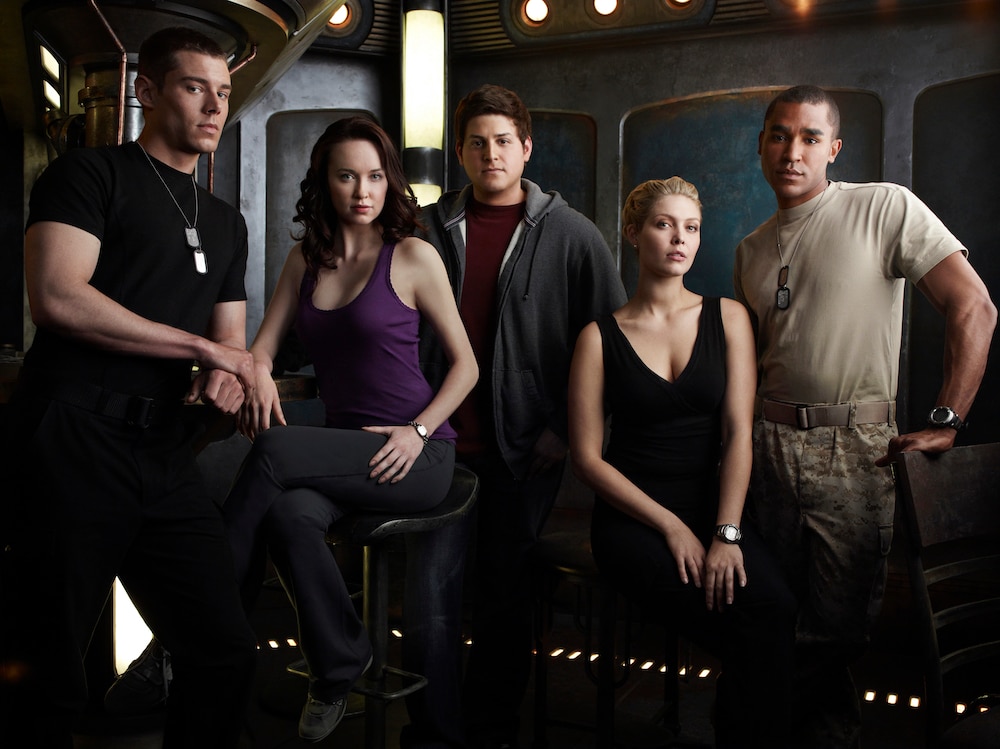Create a free profile to get unlimited access to exclusive videos, sweepstakes, and more!
'Stargate Universe' producer reflects on challenges of making a ship-based sci-fi series in another galaxy
Joseph Mallozzi says the show’s controversial communication stones actually had a higher purpose: to “get us off the ship.”

Stargate Universe came late in the expansive sci-fi franchise’s long, mind-bending TV journey, following on the heels of Stargate Atlantis (which ended in 2009) and, of course, the epic 10-season run of Stargate SG-1 (which ended in 2007). Though the show's short two-season run ended on a cliffhanger, it introduced new lore into the Stargate franchise, while moving it farther from its space-soldier roots and closer to a character-based endeavor.
A lot of the credit for that, of course, goes to the Destiny — the Ancient alien vessel that, like Star Trek’s Enterprise, served as the ensemble cast’s home base in outer space. But the show’s spaceship setting came with its own challenges, not least of which was figuring out a way to ditch the claustrophobic cabin fever and get outside the ship to actually explore. In a recent fun discussion with fan webcast Dial the Gate, Stargate Universe producer and writer Joseph Mallozzi said sticking with the Destiny helped anchor the series by effectively giving the ship's occupants a set of sci-fi rules to follow.
“Conceptually, I loved the idea of a ‘ship show,.’ It’s kind of classic sci-fi, but with a Stargate angle. So that really appealed to me. I really loved the kind of ensemble dynamic,” explained Mallozzi, adding that the Destiny’s unique, Ancient-programmed auto-pilot tech introduced a neat concept: The crew could hop off and go exploring on new planets while the ship fueled up at a nearby star…but only for a limited time.
The ship, said Mallozzi, represented “a ticking clock that, when the planet came in range, you had a window in which to get down to the planet to explore and get back onto the ship. Because if you missed that window, you weren’t catching shuttle bus down the road — that was it!”
Communication stones, another bit of Stargate Universe tech descended from the Ancients, proved divisive among fans. While rooted in Stargate lore as a relic of an alien species, the stones themselves were used in ways that canon-loyal viewers hadn’t seen before, serving as a way for the crew to have consciousness-swapping experiences outside the Destiny.
The stones’ body-switching power, though, spared Stargate Universe from feeling too cramped inside a cold metal box all the time, and were intended by creators Brad Wright and Robert C. Cooper as “a core component of the show” from the start, said Mallozzi: “They felt that just being on the ship all the time would feel claustrophobic, and so that’s why they introduced the stones."
Some viewers weren’t wild about a communication tool that seemed to tantalizingly “transport” the Destiny’s stranded crew back to Earth — a planet they were meant to be desperately searching for with no real assurance, thanks to the ship’s old and peculiar ways, of ever actually reaching.
But, explained Mallozzi, the stones “opened up the show and allowed them to not only communicate, but ultimately, [to] get us off the ship. And to me, getting off the ship is easier said than done. Even though the Universe budget was healthier than Atlantis or SG-1, you would eat up a lot of that budget just by virtue of…being such a huge cast and the amazing visual effects.”
The show’s visuals definitely graduated beyond the franchise’s earliest days, benefitting from tech-driven TV effects that, during Universe’s 2009-2011 run, simply weren’t part of the deal when Stargate SG-1 first debuted in 1997. You can compare the changes across the massive Stargate timeline at Pluto TV, where Stargate Universe (and the entire Stargate saga, including the 1994 Roland Emmerich film that started it all) are streaming free around the clock.
Looking for more space-set sci-fi adventures? Stream the full run of Battlestar Galactica on Peacock, and keep an eye out for new sci-fi series The Ark coming next season on SYFY.


























